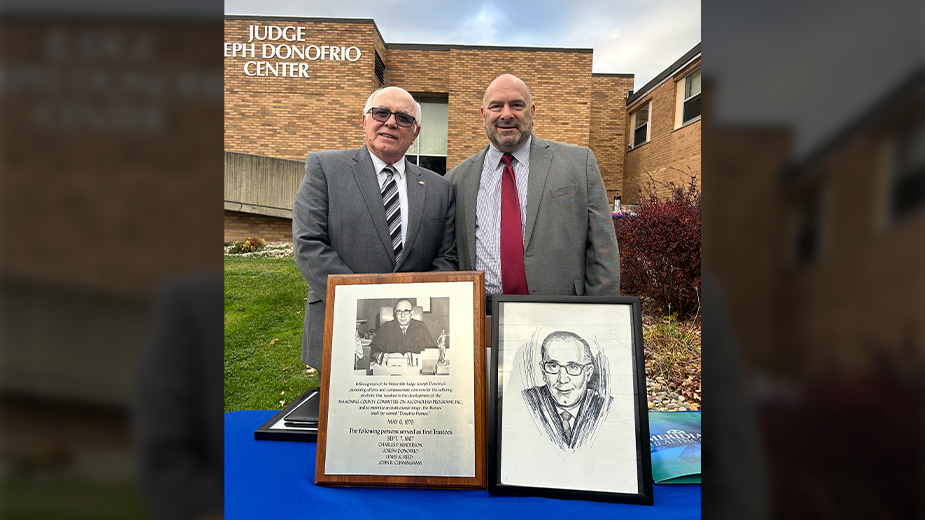Baby Boomers Need ‘Adult Child Influencer’
YOUNGSTOWN, Ohio – With the baby boomer generation – those born between 1946 and 1964 – approaching retirement, more people will find themselves in the role of the adult child influencer if they haven’t already. And it’s a role they need to prepare for.
Adult child influencers, or ACIs as jargon in the senior-care industry describe them, make important life decisions for aging parents, but many don’t know where to start, says Ashley Gay, clinical nurse liaison with Continuing Health Care Solutions of Middleburg Heights. Decisions can include anything from managing finances to taking away a parent’s driver’s license to transitioning to long-term care.
“Seniors are listening to the input of their children and they’re relying on their children to make those decisions,” Gay says. “But there’s not a lot of education available to understand the process.”
Gay recommends discussing the parent’s wishes early on so there are no questions. Getting documents such as a living will and power of attorney in place and notarized, help the decision-making process when parents aren’t cognitively able to answer for themselves, she says. It also helps when there are multiple children.
“When you have several adult child influencers who are disagreeing, that’s going to make the transition even harder for the seniors,” Gay says. “If there are those documents, that helps take the stress off the ACI and they don’t have to make that decision because mom already made that decision when she was in her right frame of mind.”
Early conversations involve the child in the parent’s life without taking it over, says Lisa Solley, director of communications for Area Agency on Aging 11 in Niles. Without them, some children may try to force parents to make decisions they don’t want to make, which the agency works against.
“Just because you age, you don’t lose your rights,” Solley says. “A lot of times what will happen is you’ll get role reversal and the child becomes the parent.”
Respecting a parent’s wishes can be difficult for a child, she says. It’s something Solley learned firsthand with her own father, Lonnie, who battled melanoma for five years before he died about a year ago. When the cancer metastasized, he refused pain medications. A former steel worker, “He was one of those tough old birds,” she says. So he didn’t want to take anything that would limit his ability to be clear-headed and in the moment.
“It was hurting me to see him hurting, but it was still his choice,” Solley says. “For me to honor him, I needed to honor his wishes. It’s one thing to say, but it’s another thing to actually do.”
Early conversations promote a more inclusive relationship between the ACI and the aging parent, she says. By nature, ACIs may become pushy because they want what they feel is best for their parent, while the parent doesn’t want to be a burden. This can lead to a situation where the parent keeps things from a child, such as a fall or an automobile accident.
“They’re afraid of losing their independence, so they keep it inside instead of having an open dialogue,” Solley says. “It creates a secretive type of relationship.”
Solley recommends adult children influencers ask questions and be honest about their concerns rather than simply “telling parents what to do.” In the instance of giving up a driver’s license, she says the child needs to have a solution ready, “otherwise you leave them afraid of losing everything and not having options.” Resources on the Agency’s website at AAA11.org can help with the conversations, she notes.
“The biggest thing is that you have to respect that their wishes be honored first and foremost, even if they go in complete contrast to yours,” she says.
Many seniors wish to remain living independently, but when that is no longer possible, Continuing Health Care’s Gay says she sees a 50/50 split between home care and skilled nursing. Making this decision is one of the top stressors for an adult child influencer, she says.
“You want your loved one to receive the best care and you want to send them to the best place,” Gay says. “And you don’t want to upset or disappoint your loved one by sending them where they don’t want to be.”
Amenities important to adult child influencers include private rooms, laundry services, furnishings, copays and the nurse-to-patient ratio, she says. It’s a good idea to tour a building and visit with an on-staff social worker to help with the transition, she says. Gay recommends researching quality measures, services and ratings of centers at Medicare.gov, and to consider the cost of long-term versus home care.
In the Mahoning Valley, the average monthly rate to stay in a long-term care center runs from $4,000 to $8,000. And if the patient has assets, “They won’t be eligible for Medicaid,” she says.“That’s when financially, when you’re looking at that long-term plan, it becomes stressful to the ACI. Especially if they’re the one handling all of the financial aspects.”
Having a financial plan established ahead of time ensures there is funding for long-term care, and prevents some children from deciding not to spend the money on such care “because maybe that money was coming to them later down the road,” she says. “It’s sad to say, but that’s what we see.”
It’s imperative that either the parent or the adult child influencer start researching savings vehicles – and insurance – well ahead of when it’s actually needed, says Carl Heltzel, a financial advisor with Raymond James Financial Inc. in Youngstown. This gives the asset time to grow and ensures the parent is applying for the coverage when they’re healthier, he says.
“When the times comes, if you don’t have anything set up, there’s not a whole lot you’re going to be able to do other than using existing assets or income to make those payments,” Heltzel says.
In a relatively new savings vehicle, assets can help multiply the benefit that becomes available for long-term care, he says. For this product, the insurance company is underwriting two aspects: what they’re able to get as a return within the contract and the likelihood of the person requiring long-term care.
Heltzel cautions that this type of savings vehicle is one of the most complex that his office deals with, and customers need to carefully determine who is the beneficiary and who is the annuitant. Cost of the coverage is also important, he says, because it will be subtracted from the return on the annuity contract.
“These are not simple contracts. Each one has its own nuance and has to be looked at very carefully,” he says.
Another possibility is if the parent holds a traditional whole life insurance policy that, over time, has developed cash value. The policyholder can take the cash value and apply it to a policy that provides for long-term care benefit.
Heltzel reminds his clients that there are few options outside of government programs to get financial help. For people who have assets, such as a home, savings or retirement accounts, he recommends some planning with an attorney to protect and preserve those assets. And he advises doing it “years in advance, not months in advance,” he says.
“Medicaid requires you to pay down a lot of your assets before their benefits become available to you,” he says. “The whole idea here is there are things that you can do so that the assets become disqualified for consideration by the government when you fill out your financial information and you’re seeking Medicaid benefits.”
Copyright 2024 The Business Journal, Youngstown, Ohio.



